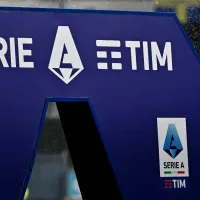With the new season underway, Italy’s premier league, Serie A, is at a critical juncture regarding its broadcasting and streaming rights. Current rights expire at the end of the 2023/24 season. With bids coming in below the League’s target, there is now talk of Serie A launching its own service.
Broadcasters failing to meet Serie A’s valuation
Serie A has struggled to attract satisfactory bids for the next media rights cycle. The league set a target of around $1.25 billion per season. However, the offers from DAZN, Sky Italia and MediaForEurope fell well short.
A key factor driving this aggressive stance is the financial disparity between Serie A and the leading European leagues. The English Premier League secured a domestic deal worth over $3 billion annually for 2022-25. Even Spain’s La Liga and the German Bundesliga earn over $1.5 billion and $1.2 billion respectively from their domestic rights. Serie A clubs are feeling the pinch from earning almost $1 billion less.
The league believes its commercial value merits deals on par with La Liga and the Bundesliga. Launching a direct-to-consumer platform would be a bold step toward actualizing that value.
Going direct-to-consumer a viable option
The lower-than-expected bids prompted Serie A to consider a drastic approach. It may launch its own direct-to-consumer streaming platform. According to Serie A chief executive Luigi De Siervo, the league has the infrastructure ready to distribute matches directly. Speaking at an event in Milan, he said “We have the structure to offer [matches] directly to viewers….we are considering this option.”
With bids not meeting expectations, De Siervo insisted Serie A will not accept unsatisfactory offers. However, if the offers remain inadequate by the Oct. 15 deadline, the nuclear option of a Serie A streaming service appears likely. This represents a major shake-up. Serie A would bypass established broadcasters and back its ability to generate higher revenues independently.
While risky, the strategy is not without merit
Serie A can leverage its large global fanbase, the presence of elite clubs like Juventus, AC Milan and Inter Milan and star players like Lautaro Martinez and Rafael Leão. An owned-and-operated service offers full control over production, distribution and monetization. If marketed and priced effectively, a streaming platform could appeal to local and international audiences. And by owning a direct relationship with customers, Serie A keeps all the revenue rather than sharing it with broadcast partners.
There are challenges in taking this direct-to-consumer approach. Launching and operating a streaming video service from scratch is complex and cost-intensive. And Serie A would face intense competition for viewers’ time and subscription dollars. But the league seems willing to make this bold bet to transform its broadcasting model, back its product value and maximize revenues. If domestic bids remain low, Italian soccer fans may soon have a Serie A streaming service to call their own.
PHOTO: IMAGO & Beautiful Sports














